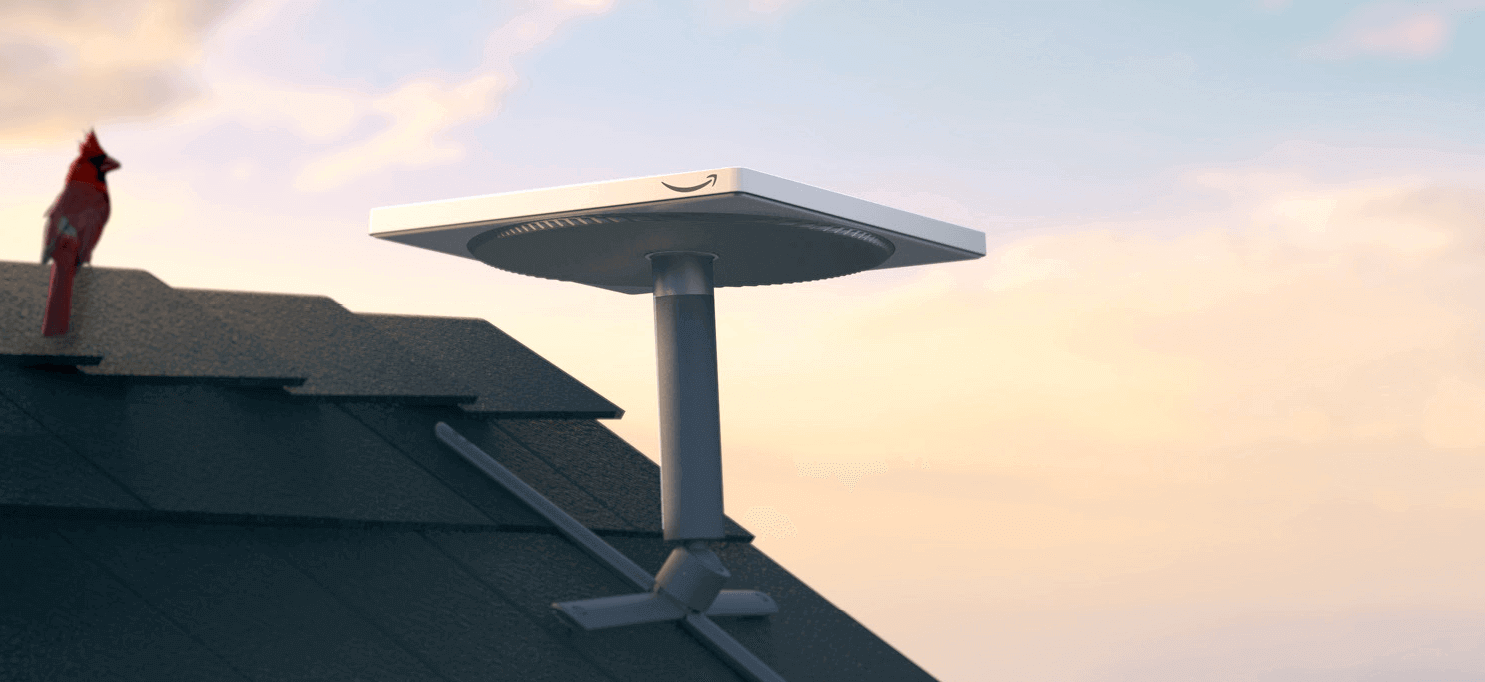NBN Co is bringing better, faster broadband to regional Australia thanks to a newly-announced and world-first partnership with Amazon.
Starting mid-2026, NBN Co will begin offering country customers access to high-speed internet via Amazon’s Project Kuiper, a Low Earth Orbit (LEO) satellite service. Project Kuiper connectivity will be rolled out to more than 300,000 homes and businesses in regional areas who are currently serviced by NBN’s own Sky Muster satellite.
What does this mean for internet in regional Australia?
The agreement is a huge win for NBN customers in rural and remote Australia, who have comparatively been left behind due to a lack of access to fast fibre broadband. While NBN Sky Muster and fixed wireless coverage is available regionally, these plans can’t match the performance of full fibre technology offered in metropolitan areas.
NBN’s current Sky Muster service is supplied by two geostationary satellites, supplemented by 10 ground stations. The partnership with Amazon will involve transitioning Sky Muster customers to the Project Kuiper LEO satellite network over the next few years, and will be fully funded by NBN Co with no additional taxpayer dollars required.
NBN Co CEO Ellie Sweeney called the deal “a major leap forward” for the national network and Australians.
“We plan to bring faster, lower latency broadband to Australians living and working in regional, rural and remote areas, enabling their ongoing participation in the economy for work, study, telehealth, streaming entertainment and connecting with family and friends,” Ms Sweeney said.
“This new LEO service will eventually replace our geostationary satellites, and we are committed to working with regional communities to ensure we provide continuity of service and make the transition as smooth and seamless as possible.”
Ms Sweeney said that wholesale pricing for Project Kuiper satellite was yet to be determined, but that NBN Co will consult with internet service providers, regional community representatives and other stakeholders on speed tiers and affordability.
How does this compare to current Sky Muster satellite plans?
Sky Muster was originally launched in 2015 to cover areas of Australia that could not be reached by fixed-line broadband or fixed wireless. Currently, Sky Muster offers ‘burst’ speeds of up to 100 megabits per second (Mbps) on its highest tier plans, with a typical download speed of between 12Mbps and 50Mbps depending on the plan.
Amazon plans to launch more than 3,200 LEO satellites by the Australian rollout date, each of which will be linked to a global network of ground infrastructure to enable fast, low-latency broadband. While it’s too early to say what kind of speed or performance Project Kuiper will offer Aussies, we can expect the service to eventually deliver much faster speeds and a more stable connection than Sky Muster.
Retail prices will ultimately be set by the internet service providers who decide to sell Project Kuiper NBN to customers. Existing Sky Muster plans tend to be slightly more expensive than fibre NBN, with a 50Mbps plan priced from around $75 per month and 100Mbps closer to $100 monthly.
Will NBN Co’s LEO satellite service be better than Starlink?
The major competition for Project Kuiper is Starlink, the SpaceX-owned LEO satellite service that now offers residential and business broadband across Australia. Both companies rely on a network of satellites to supply high-speed internet, but Amazon’s deal with NBN Co gives it a massive advantage in the Australian market.
Unlike Starlink, Project Kuiper satellite will be offered with NBN Co and internet provider-backed service, which may be a plus for customers with concerns about Starlink’s lack of Aussie support (outside the reseller options available from Telstra or Optus). Starlink is also much pricier than NBN satellite, with monthly unlimited data plans beginning at $139 per month, plus standard setup costs of $549.
However, Starlink’s residential plan speeds easily outstrip Sky Muster, offering typical download speeds up to 270Mbps and uploads to 40Mbps. If NBN Co can price and market Project Kuiper right, it may be able to claw back regional customers who have reluctantly switched to Starlink for the faster speeds and reliability.
What do NBN Sky Muster satellite customers need to do?
If you’re currently on a Sky Muster plan, or are within the Sky Muster footprint, you may be eligible to transition to NBN LEO once the rollout commences in mid-2026. NBN Co will begin beta testing the service in Tasmania before officially launching plans, and expects availability to begin in southern Australia before moving north.
NBN Co’s priority is to make the switch over as painless as possible for Sky Muster users, and will make standard LEO installation available at no extra cost for eligible customers. For now, there will be no immediate change to Sky Muster services, but NBN satellite customers should keep an eye out for communication from retailers on what to expect next year.



Share this article